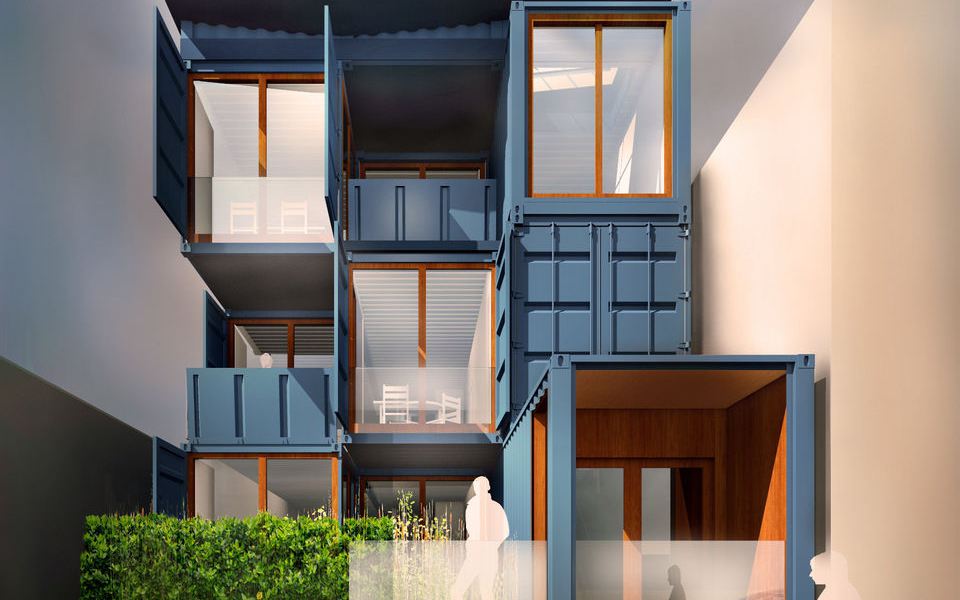Originally published on NJ.com.
There’s a great deal of cognitive dissonance in imagining a steel box that was once stacked on the shores of Port Newark as a viable place to rest your head at night. But using shipping containers for homes and commercial buildings may serve as a lower-cost alternative to traditional methods for affordable housing and commercial construction. The fact is, though, that while developers have, on a small scale, begun to conceive larger multifamily container structures, there has yet to be a substantive shift in development approaches. A quick examination of many parts of Europe – and even the western United States – reveals that this low-cost, simplified method of building is actually more of an architectural novelty.
When we hear about shipping container buildings, we’re typically fed a narrative about the uniqueness of their architectural method rather than the applied benefits of reducing housing costs and accessibility. The buildings’ boxy, modular designs, only faintly reminiscent of their original cargo uses, are trendy – especially in rural and suburban areas – for their industrial aesthetic, usually juxtaposed with the surrounding countryside.
This leads to the prevailing perception of containers as toys for the building of lavish vacation homes, or, less commonly, temporary housing for the impoverished or displaced. But as a viable construction method for a majority of the population in need of more affordable housing options? Not so much.
This remains primarily a problem of perception. People often associate shipping containers with the grit and grime of the docklands, and many local ordinances here in New Jersey prohibit the use of shipping containers for home construction.
Part of the problem is that when you create homes out of shipping containers, they tend to look like shipping containers; zoning ordinances are often designed in part to safeguard neighborhoods against buildings that are ugly or jarring. The homes will need to be encased in a frame (likely wood or steel) and painted in order to look more like a home and less like a life-size Lego set.
The region has ample access to ports that are teeming with containers: Port Newark, Red Hook Container Cargo, BCT Bayonne, and many others. These building materials are readily available, and the transportation costs are negligible for nearby cities.
For some perspective, Cor-10, a Newark-based company that got approval from the city planning board in June to build a three-unit container home structure in Newark’s Lincoln Park neighborhood, estimates that their project could be built in only three to five months for about 25 percent less than the cost of traditional home construction. The sides are working through the permit process for the project. In Shore towns such as Belmar and Wildwood, shipping containers are being employed as storefronts and workshops. The structures can be opened and interlocked to accommodate various floor plan designs, all using containers from nearby Port Newark.

Erin O’Neill | NJ Advance Media for NJ.com
Companies like Cor-10 have an uphill climb to broaden the appeal of shipping containers as permanent homes. This means lobbying local governments to allay safety concerns and alter zoning regulations in addition to the greater challenge of legitimizing their use as everyday domiciles among the general public.
It’s naïve to assume that we’re looking toward a future of cities-as-steel-jungles, but a foundation exists to create a groundswell of support for a more utilitarian application of these assets. Housing subsidies, after all, are finite. Access to adequate housing for a wider population is going to require some creative solutions.

